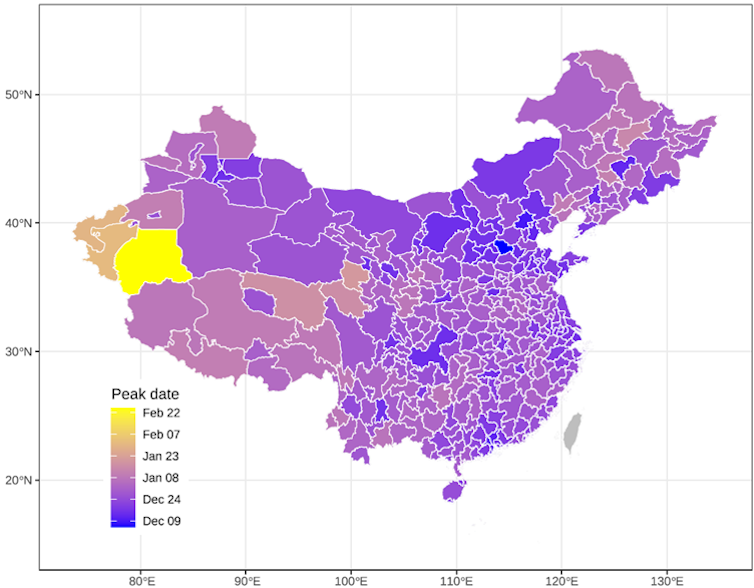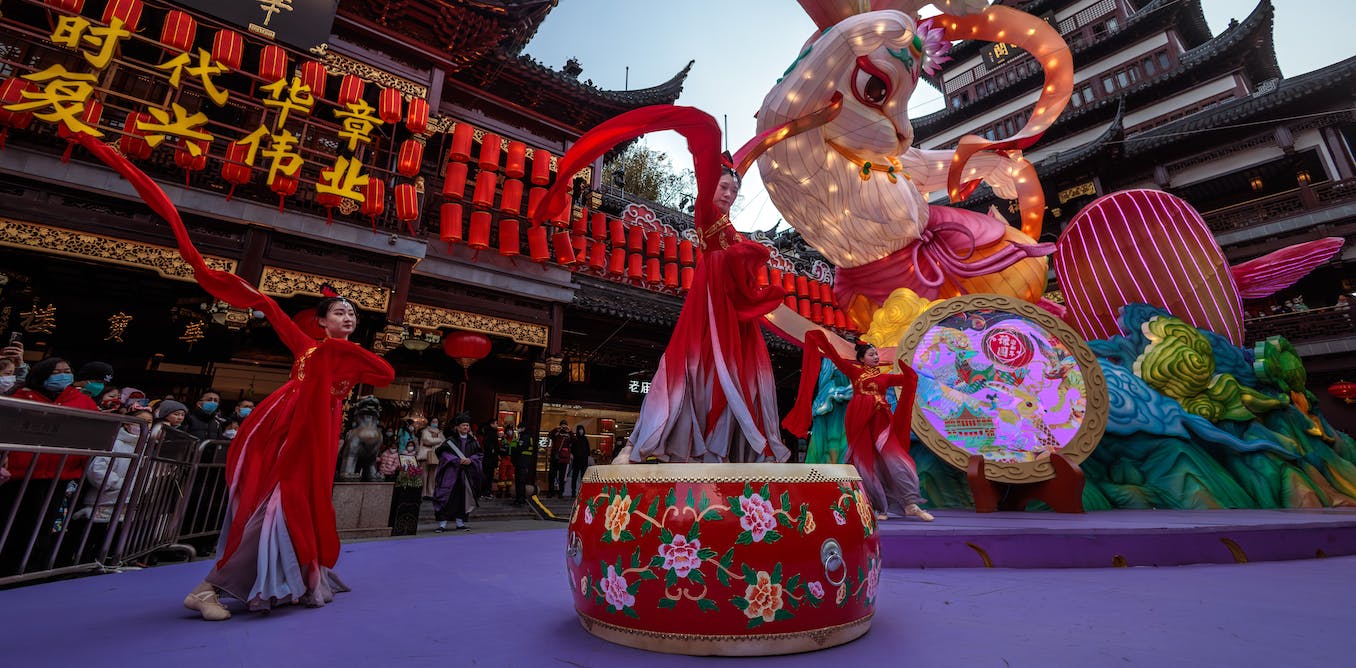China stuck rigidly to a zero-COVID policy until December 2022. This included travel restrictions, mass testing and mandatory quarantines. The rapid lifting of this strategy led to a surge of COVID infections across the country.
There have been concerns that the Chinese lunar new year travel in January may cause this wave of COVID to spread much further and faster, with significant numbers of hospital admissions and deaths.
Lunar new year involves hundreds of millions of people travelling across the country, and is considered to be the world’s largest annual migration event.
So how have things been tracking in China, and how will lunar new year trips affect COVID transmission? Our modelling may provide some clues.
This year lunar new year fell on January 22, though population movements for the celebrations began on January 7 and will run until February 15. Domestic travel was expected to peak around January 19.
According to estimates from the Chinese Ministry of Transport, the total number of lunar new year travellers is expected to have increased by 99.5% over the same period in 2022 and returned to 70.3% of what it was in 2019.
Through WorldPop, a research group based at the University of Southampton which maps global population distribution for health and development, we have continued to analyse population movements and their relationship to COVID transmission throughout the pandemic. Our earlier research indicated that lunar new year movements contributed significantly to the initial spread of the virus in January 2020.
This new wave has largely been driven by the omicron sub-lineages BA.5.2 and BF.7. We used an epidemiological model to simulate the transmission of these omicron variants across 339 areas in mainland China from November 1, 2022 to February 28, 2023.
Read more:
COVID is running rampant in China – but herd immunity remains elusive
This work has not yet been peer reviewed but our model estimated changes in the number of susceptible, exposed, infectious and recovered or isolated people within each area and their daily movements between areas. We incorporated numerous different sources of data, including intracity and intercity mobility data, vaccine uptake data by province, and COVID-related search index data on the Chinese internet search platform Baidu.
An important element of our model is the R value, which indicates how many people on average one infected person will infect in a susceptible population. We estimated R using reported case information and other data.
We compared the results of our model with online survey data on COVID infections, and we tested different R values and epidemiological parameters to better assess the uncertainties around our estimates.
Past the peak
Baidu searches with the term “fever” showed that most Chinese areas reached a peak in searches around December 20.
Baidu searches for ‘fever’
Based on this and other data, and an R value of 10, further adjusted by intracity mobility data, our model estimated that COVID infections nationwide peaked around December 26 to 28. At that time, roughly 4.2% of the Chinese population were probably infected, as shown in the figure below.
Estimated COVID infections in China

We also estimated that infections in 76% of areas peaked in December and 21% between January 1 and 10. The remaining 3% would reach the peak after January 10.
By December 31, we believe 73%–79% of all people in China would have been infected in this wave.
Estimated infection peaks by area

Our estimates under an R value of 10 are consistent with the recent reports released by the Chinese Center for Disease Control and Prevention (CDC). The CDC reported that the positive rate of COVID tests peaked between December 22 and 27 across the country. China passed the peaks of fever-related outpatient visits for both rural and urban areas (peaked on December 23), emergency department visits (January 2) and admission of severe cases (January 5).
Our results are also consistent with the findings of recent online surveys on COVID infections conducted in different provinces. For example, the Sichuan CDC in the western province of China reported that the overall infection rate of its residents had exceeded 80% by January 1, with a peak between December 12 and December 23. And Henan province in central China reported that its infection rate was 89% by January 6, after peaking on December 19.
So what about lunar new year?
Since most cities are estimated to have passed the peak of infections before January 10, and the majority of the population has already been infected, we expect the lunar new year travel will have a limited impact on the trajectory of COVID transmission in this wave across the country.
Of course, there may be subsequent waves of infections, for example in summer, due to waning immunity and the possible emergence of new variants.
Read more:
COVID: what we know about new omicron variant BF.7
We intend to refine our analysis with the latest data and publish a full report setting out our research in the coming weeks. But it’s important to note that at this stage, this work has not yet been peer-reviewed.
Whatever the precise estimates this and other models generate, it’s clear there are significant risks of severe disease and death among vulnerable groups such as the elderly. There’s also high pressure on health services, and relatively inadequate healthcare resources in rural areas. Measures like increased vaccine uptake in older people will be vital to ensuring the impact of COVID in China is reduced in future waves.




